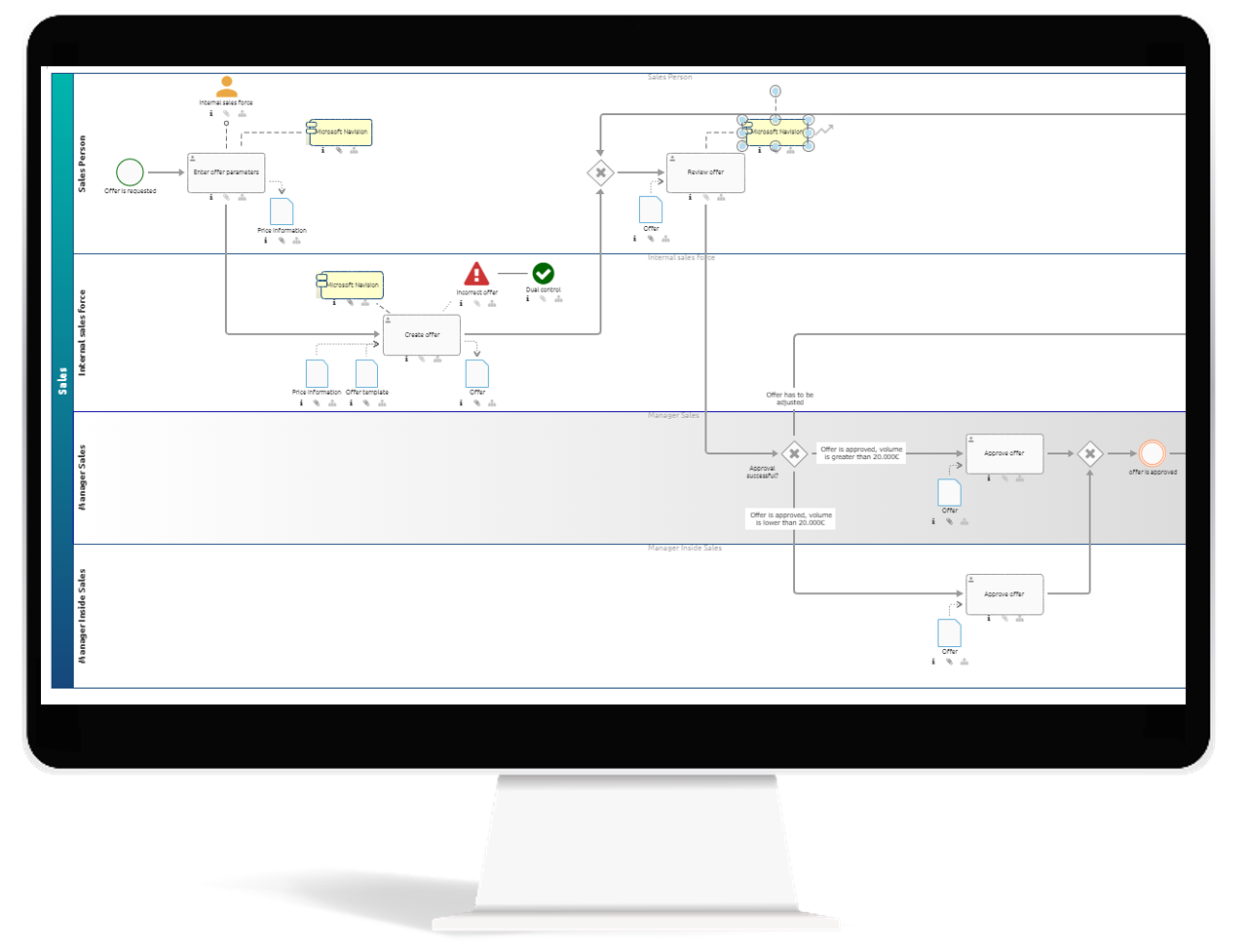IT systems in Process Diagrams
Why Specifying them as Process Participants is Crucial in Business Process Design?

In today's fast-paced business environment, integrating IT systems into your business processes is not just a good practice—it's essential. Specifying IT systems as participants in your end-to-end business process modelling and design brings a myriad of benefits that can significantly enhance your organization's efficiency, scalability, and overall performance.
Automation and Efficiency
When IT systems are clearly defined as participants, they can be seamlessly integrated into workflows. This integration minimizes the need for manual intervention, reducing errors and accelerating process execution. Automated systems handle repetitive tasks with precision, freeing up your human workforce to focus on more strategic activities.
Clarity and Transparency
By specifying the roles of IT systems, you create a transparent and well-documented process structure. This clarity ensures that everyone understands how and where these systems contribute, preventing overlaps and gaps. Comprehensive documentation is crucial for training, auditing, and continuous improvement initiatives.
Enhanced Coordination
Defined IT system roles ensure smooth synchronization and data flow between different stages of your business process. This coordination leads to better resource management, as you can allocate and optimize your resources more effectively, ensuring that all parts of the process work harmoniously.
Scalability and Flexibility
Business processes need to adapt to changing technology and market demands. With well-integrated IT systems, your processes can be updated with minimal disruption. This flexibility makes your operations more scalable, allowing you to grow and evolve without significant overhauls.
Performance Monitoring and Optimization
IT systems provide detailed metrics and logs, which are invaluable for monitoring and optimizing performance. These insights help identify bottlenecks and areas for improvement, enabling continuous process optimization and ensuring your operations remain efficient and effective.
Compliance and Risk Management
Specifying IT systems within your processes ensures that regulatory compliance is built into the workflow. This is critical for industries with stringent regulations. Additionally, understanding potential failure points allows for better risk mitigation and the development of robust contingency plans.
Customer Satisfaction
Efficient IT systems enhance service delivery speed and quality, leading to higher customer satisfaction. A well-integrated system ensures consistent customer experiences, maintaining the quality of interactions and services provided.
Cost Efficiency
Effective IT system integration can lead to significant cost savings. By reducing manual labor and improving efficiency, organizations can lower operational costs. Additionally, clear understanding and documentation of IT roles aid in better budget planning and cost management.
Conclusion
Specifying IT systems as participants in your business processes is not just a technical detail—it's a strategic imperative. This approach brings automation, clarity, coordination, and flexibility, all of which are crucial for modern business success. It enhances performance monitoring, compliance, and customer satisfaction while ensuring cost efficiency. By embedding IT systems into the fabric of your business processes, you position your organization for sustained efficiency and growth in an ever-evolving technological landscape.
Want more information?
T +90 212 284 75 92



